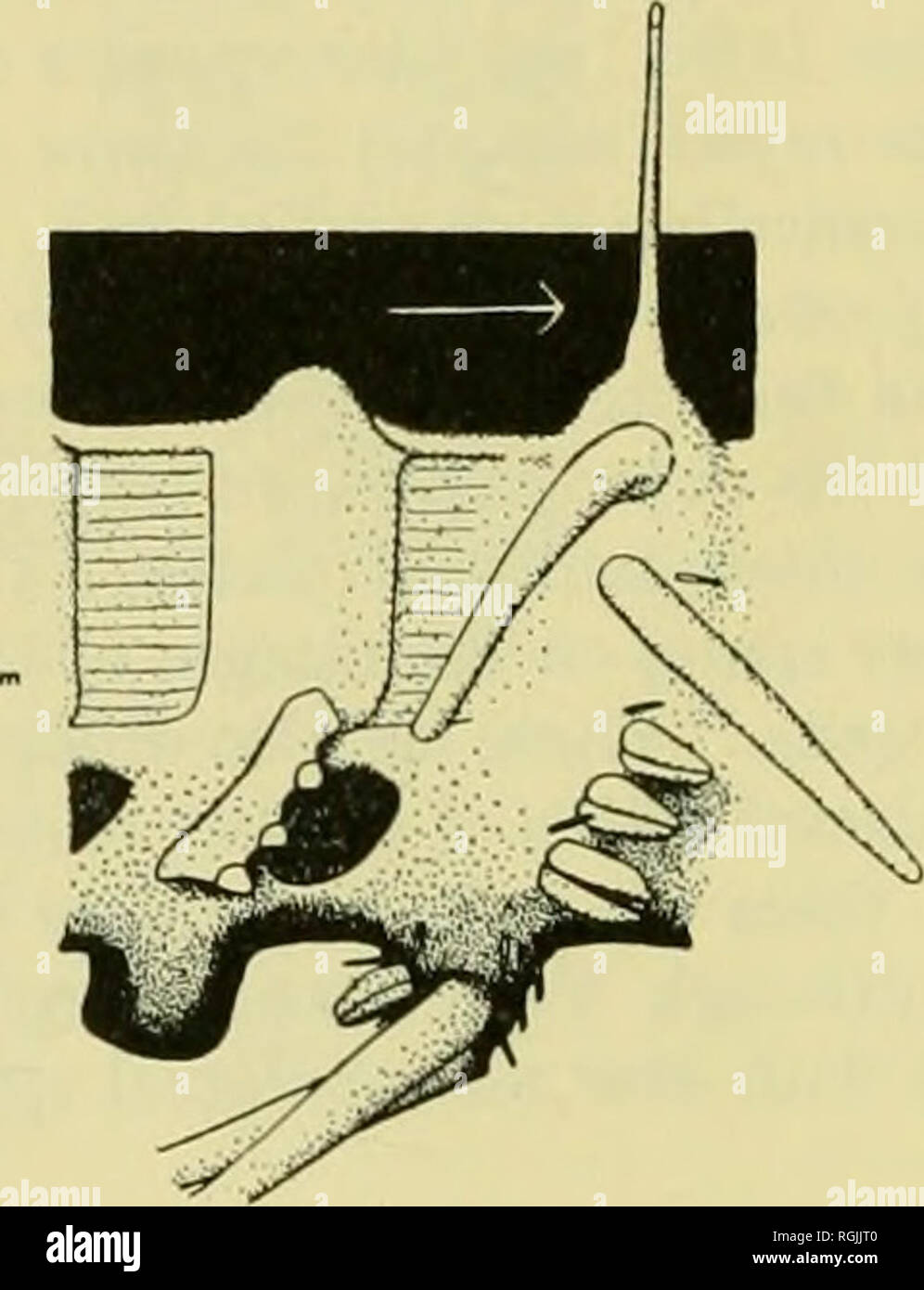. Bulletin of the British Museum (Natural History). 146 THE "ROSAURA" EXPEDITION right angles to the furrow ; one to four ventro-lateral pedicellariae ; no furrow pedi- cellariae except on the mouth plates ; infero-marginal plates extending on to the dorsal side, with four (sometimes three) large spines which alternate in position on adjacent plates. Description. The two specimens are ten-rayed. Most of the arms are broken off near the disc and lost. The longest arm remaining attached to a specimen is 65 mm. long ; its tip is regenerated so that its length cannot be taken as a measur

Image details
Contributor:
Book Worm / Alamy Stock PhotoImage ID:
RGJJT0File size:
7.1 MB (193.8 KB Compressed download)Releases:
Model - no | Property - noDo I need a release?Dimensions:
1384 x 1805 px | 23.4 x 30.6 cm | 9.2 x 12 inches | 150dpiMore information:
This image is a public domain image, which means either that copyright has expired in the image or the copyright holder has waived their copyright. Alamy charges you a fee for access to the high resolution copy of the image.
This image could have imperfections as it’s either historical or reportage.
. Bulletin of the British Museum (Natural History). 146 THE "ROSAURA" EXPEDITION right angles to the furrow ; one to four ventro-lateral pedicellariae ; no furrow pedi- cellariae except on the mouth plates ; infero-marginal plates extending on to the dorsal side, with four (sometimes three) large spines which alternate in position on adjacent plates. Description. The two specimens are ten-rayed. Most of the arms are broken off near the disc and lost. The longest arm remaining attached to a specimen is 65 mm. long ; its tip is regenerated so that its length cannot be taken as a measure- ment of R. The radius of the disc is about 13 mm. The arms are constricted to a width of 9-5 mm. where they join the disc ; farther out they are 13 mm. wide. None of the paxillae of the arms are arranged in regular rows. Those near the margin are somewhat bigger than, but otherwise similar to, those in the centre.. Fig. 3. Luidia barimae sp. n. Type. Ventral view of one side of two joints, that on the left having been denuded with sodium hypochlorite. (The arrow points towards the mouth.) Each consists of a peripheral circle of eight to twelve widely spreading spinelets and a central spinelet, a little stouter but no longer than the peripheral ones. One of the peripheral spinelets is frequently replaced by a small bi-valved pedicellaria. There are no spino-paxillae. The paxillae in the centre of the disc are small and much more crowded than those of the arms. In many the central spinelet is missing. Nearly every paxilla is sup- pUed with a pedicellaria, while many have two. The pedicellaria sometimes arises from near the centre of the paxilla. The madreporite is 2-5 mm. in diameter and may be trefoil-shaped ; it arises from very near the edge of the disc. A few paxillae appear to arise from it, but in reality project from between the lobes, not from the madreporite itself. The bigger elements in the armature of the adambulacral, ventro-lateral and infero-marginal plates form